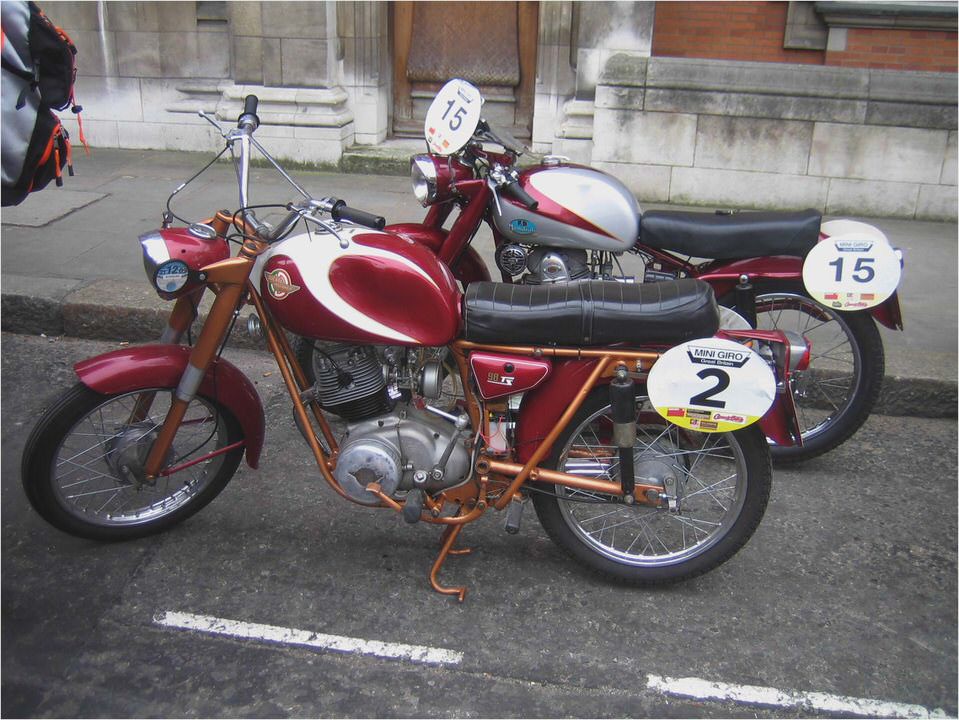The Ducati 748R the Ducati 748RS
In the UK in 2000 a little tuning shop (us!) decided to go British Championship Supersport racing. Supersport is a lot closer to road bikes than Superbike so, just like the production series in 1999 what we learned would be of direct relevance to the street bikes we deal with daily.
In 2000 British Championship racing meant we would be going head to head with Factory Hondas and Sundry Importer Teams in a televised series. This was not a sideshow or ‘Saturday race’ this was one of the main parts of the British championship. It is a ‘win on Sunday, sell on Monday’ class, it is very important to the manufacturers.
Our overall budget was to be about half of what Honda were paying Jim Moodie to simply ride their CBR600.
We bought a 748RS. Here you can see the photos of the bike ‘on delivery’. As you can see it is a stripped down version of the street bike with lightweight bodywork, race only wiring loom, exposed Cam belts and internal engine modifications that are inline with the FIM world Supersport rule book .
All civilised countries and the UK use these same regulations for their National Supersport class. Pitching 750 twins against 600 fours the Supersport class is one of the most closely fought over in the world, the Ducati had fallen behind over the last few years; the 748RS was the chosen vehicle for their re-entry onto the centre stage.
From the start we knew there would be little room in the budget so we elected to run like a privateer 250 team. Small van (bloody fast third hand Merc Sprinter actually) and a borrowed 1965 GP (honest, real GP, real 1965!) awning; three people max, with a rider on his way up and not yet being paid – no semi trailers, hospitality units and paddock totty for us (One day….).
We made several important decisions; we would be entirely independent of the British trade, everybody else uses bought in engine preparation and suspension, we would build our own. The reason for doing a year at this level, even on a shoestring Budget, was to prove that we can build Ducati’s, their motors and set them up with the best there is.
As expected not everything went to plan, there are many things involved in getting a racing motorcycle to the front of a race that would be decided by things completely out of our control. Despite promises we were not allowed to have full choice of tyres, we did not have the money to test as much as we would like, and there were simply too many costly crashes.
But we did all the races we could afford, and on one great weekend in May we proved our point, Jonesey qualified the bike second (ahem, in front of the previously mentioned Jim Moodie) and finished sixth in a foreshortened race. We always got in the top five for speed; by the end of the year we were always qualifying in the top ten and at least once were the first Ducati. We had one mechanical problem all year (Rider had trouble changing down the box, we are still looking for the fault).
The article that follows is a technical comparison of the main differences between the Racing Ducati 748RS and the road going 748R on which it is based. I have included the relevant parts of the FIM rule book where appropriate (in italics) and sought to show actually how close the road bike is to the racer and to run through the different ways the two bikes are set up and the reasons for the differences. The tech specification of the bike is set out here and a full copy of the Supersport pages of the 2000 FIM Technical rulebook can be found here. The purpose of Sports Production racing
To encourage competition between machines of similar potential power, but with different engine sizes and configurations. To use in competition, machines with the appearance as close to production as possible. To provide a racing class with machines available in adequate quantities through normal commercial channels.

To allow freedom to the tuner. To provide cost limiting factors. To provide interest to the after-market suppliers to be involved in competition activities.
To maintain speed and horsepower at a safe level.
01.58 DISCIPLINE SPECIFICATIONS – SUPERSPORT
VERYTHING THAT IS NOT AUTHORISED AND PRESCRIBED IN THIS RULE IS STRICTLY FORBIDDEN
Supersport motorcycles require an FIM homologation (see Art. 01.62). All motorcycles must comply in every respect with all the requirements for Road Racing as specified in the Road Racing Technical Rules, unless it is equipped as such on the homologated machine.
The appearance from both front, rear and the profile of Supersport motorcycles must (except when otherwise stated) conform to the homologated shape (as originally produced by the manufacturer).
Supersport:
- Valentino Rossi Biography – Profile & Biography of Valentino Rossi
- Ducati Scrambler 350 Restoration process: Phoenix Model
- Ducati’s flagship 1199 Panigale: the full story
- Living with a Ducati 1199 Panigale S – Road Tests: First Rides – Visordown
- Ogio No Drag Mach 1, 3 and 5 Backpacks

